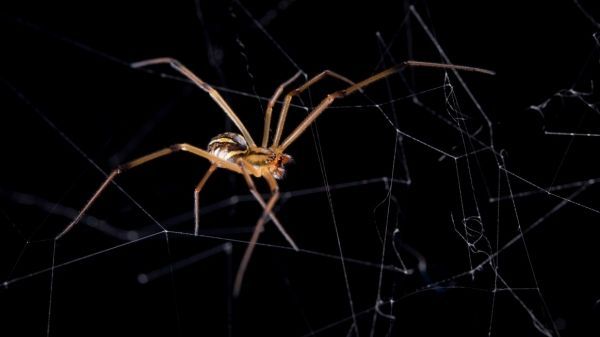A new U of T Scarborough study finds male black widow spiders will hijack silk trails left by rival males in their search for a potential mate.
Male black widows will follow chemical cues (pheromones) released by potential female mates, but it was always assumed they would avoid rival males because competition is so fierce.
“We expect males to use female cues to find a potential mate, and use those left by their rivals to avoid them,” says Catherine Scott, a PhD candidate in Professor Maydianne Andrade’s lab at U of T Scarborough and lead author of the study.
“We found male black widows follow rather than avoid rival males, using their silk trails as highways that rapidly lead them to a female’s web, even if they can’t smell the female themselves.”
The western black widow spider is a venomous spider native to large areas of western North America. The life of a male is nasty, brutish and short. Mate-searching is risky – only 12 per cent of males survive – and few females are receptive to potential mates each night. The males who survive also risk being cannibalized by much larger females before getting a chance to mate.
Read more at University of Toronto
Photo: The life of a male black widow spider is best described as nasty, brutal and short. Only 12 per cent survive the journey to find a mate, and those who do, run the risk of being cannibalized by larger females. (Photos by Sean McCann)


